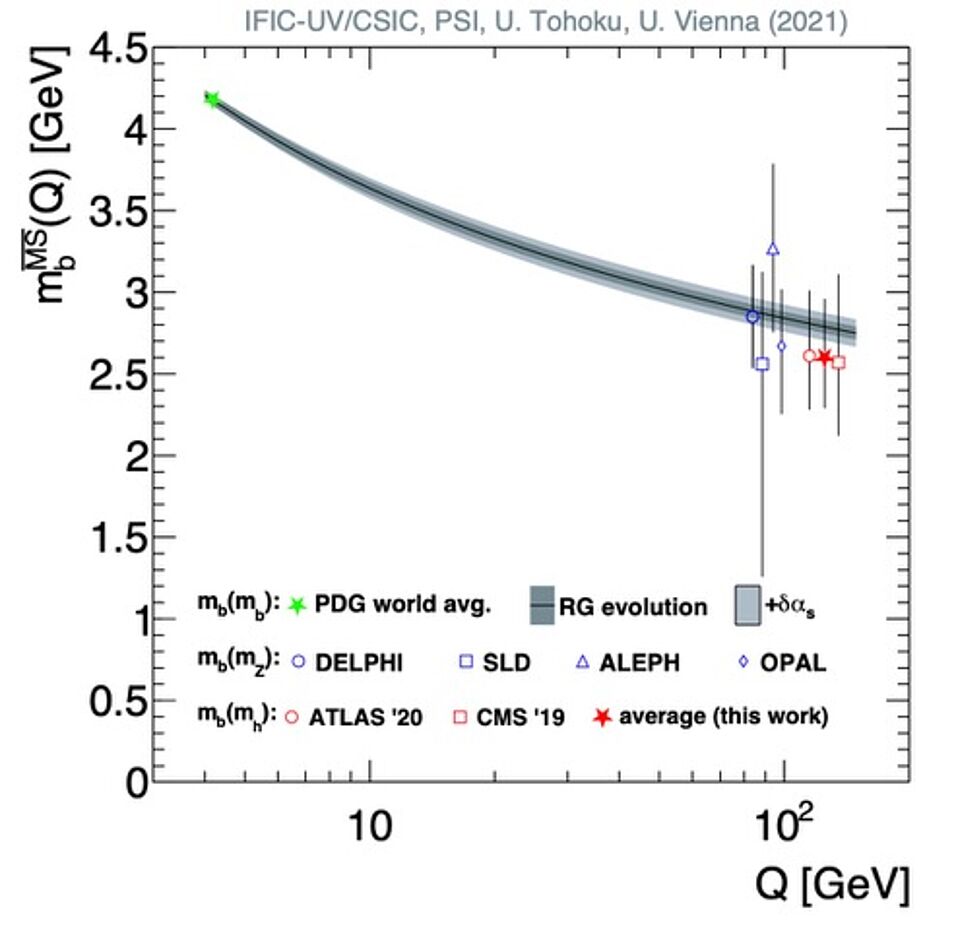Quarks are the building blocks contained in the neutrons and protons that in turn make up the atomic nuclei. One problem is that quarks are not directly observable. Quantum physics predicts that the rest mass of quarks depends on the energy involved in the process being observed. In a new international scientific study involving members of the particle physics group, the energy dependence of the rest mass of the bottom quark during Higgs boson decay has been demonstrated for the first time. The study was published in Physical Review Letters.
In the study, recent measurements at the Large Hadron Collider (LHC) on the decay of the Higgs boson into two bottom quark jets and into two Z bosons were combined with theoretical predictions to indirectly determine the mass of the bottom quarks. Since the Higgs boson is directly observable, they allow the theoretical calculations to be carried out with very high precision, so that the accuracy of the measured bottom quark mass depends only on experimental errors. With the additional data expected from the LHC's high-luminosity phase in the near future, these errors will be reduced by a factor of 5 to 6.
Original publication:
Aparisi J, Fuster J, Irles A, Rodrigo G, Vos M, Yamamoto H, Hoang AH, Lepenik C, Spira M, Tairafune S, & Yonamine, R. (2022). mb at mH: The Running Bottom Quark Mass and the Higgs Boson. Physical Review Letters, 128(12), [122001]. https://doi.org/10.1103/PhysRevLett.128.122001

